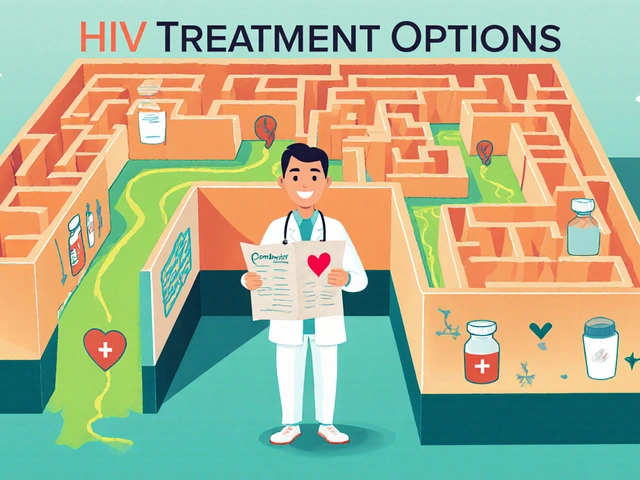Glipizide alternatives: safer and effective options for type 2 diabetes
Glipizide is a sulfonylurea that lowers blood sugar by making the pancreas release more insulin. It works fast but can cause low blood sugar and weight gain, so many people look for other options that fit their health goals better.
Before switching, check your kidney function, heart history, current A1c, and daily routine. Talk with your clinician about goals: avoid hypoglycemia, lose weight, protect the heart, or simplify pills. That helps pick the right alternative.
Top medicine alternatives and what to expect
Metformin is usually the first choice. It lowers blood sugar without causing hypoglycemia and can help with weight or keep it steady. Common downsides are stomach upset and rare B12 drop; dose and timing fixes most problems.
SGLT2 inhibitors (empagliflozin, canagliflozin, dapagliflozin) make you pee out extra glucose. They often help lower weight and protect the heart and kidneys in people at risk. Watch for genital infections, dehydration, and rare diabetic ketoacidosis.
GLP-1 receptor agonists (liraglutide, semaglutide, exenatide) are injectable drugs that lower glucose, suppress appetite, and commonly cause weight loss. They have strong cardiovascular benefits for many patients. Side effects include nausea and, rarely, pancreatitis.
DPP‑4 inhibitors (sitagliptin, linagliptin) are oral, well-tolerated, and rarely cause low blood sugar. Their glucose-lowering effect is milder than other classes but they are easy to add if you need small A1c drops.
Thiazolidinediones like pioglitazone improve insulin sensitivity and are useful in some patients. They may cause weight gain, fluid retention, and are usually avoided in heart failure.
Meglitinides (repaglinide, nateglinide) act like short-acting sulfonylureas. They lower post-meal glucose with less long fasting hypoglycemia but require dosing with meals.
Insulin remains the most effective at lowering blood sugar and is used when pills aren’t enough. Modern basal insulins are predictable and can be matched to lifestyle, but they need injections and careful monitoring.
How to switch safely
Do not stop or change pills without medical advice. Your provider will consider current A1c, other conditions, and medications. Typical steps: pick the new drug, start at a conservative dose, check blood sugar more often for 1–2 weeks, and adjust dose slowly. Keep snacks handy and learn low-sugar symptom signs like sweating, trembling, and confusion.
Monitor A1c every three months after a medication change, track side effects and weight, check blood glucose more often during dose changes, stay hydrated if starting an SGLT2, rotate injection sites for GLP-1s, and keep glucose tablets or fast carbs handy for hypoglycemia.
Cost and coverage matter. Metformin and older drugs are cheaper; GLP-1s and SGLT2s can be costly but may be covered if you meet criteria. Ask about patient assistance programs and whether the benefit outweighs cost for your situation.
If avoiding hypoglycemia is your priority, prefer metformin, DPP‑4s, GLP‑1s, or SGLT2s over sulfonylureas and insulin. If weight loss or heart/kidney protection matters, talk about GLP‑1s and SGLT2s first.
Bring blood sugar logs, medication list, and insurance info to your appointment. That makes the switch faster and safer.

Top 7 Alternatives to Glipizide You Should Know About
Tired of the same old diabetes meds? Glipizide's not the only game in town. Let's chat about some top-notch alternatives that could better suit your needs. We'll cover all the pros and cons to help you make the best choice for managing blood sugar levels.
View More




